Conservation Workshop: Moss Removal
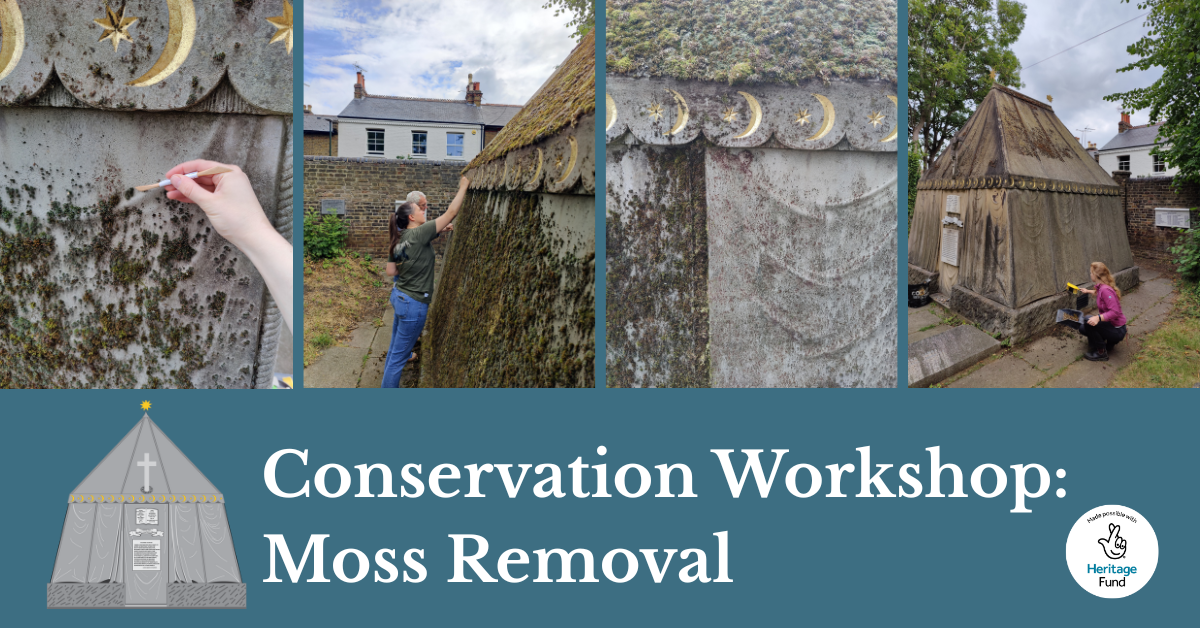
In late July, local volunteers and the Burton: Exploring Without Boundaries Team were carrying out some practical conservation on the Burton Mausoleum under the expert supervision of Cliveden Conservation’s conservator Adrian.
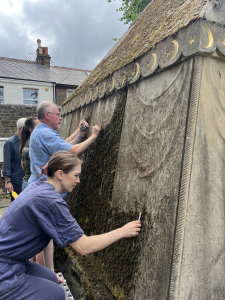
We arranged the workshop to teach us about the maintenance of sandstone memorials, and particularly the removal of moss. Moss is a persistent problem when it comes to historic monument conservation. It is attracted to damp areas and can cause problems in the stone due to root growth and increased water retention.
The Burton Mausoleum has moss growth on every side, and the shady north side had almost a blanket coverage. All the moss needs to be removed to allow our first phase of conservation to go ahead.
After a theoretical overview from Adrian, we took up our tools and got to work. The best tools for this job are wooden clay modelling tools and nylon brushes. These are strong enough to remove the moss while being gentle enough to avoid damaging the stone underneath. We were provided with plenty of wooden tools as they wear down with use and lose their edge over time.
We carefully and gently scraped away the moss from the surface of the sandstone. Working on the flat side panels was extremely satisfying. We could remove large areas quite easily.
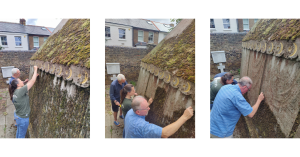
Working around the detailed carved areas such as the ropes and pelmet took a bit more time. We used smaller hooked tools to get in all the nooks and crannies of the stonework. It was an exercise in being patient and taking our time. Once we started it was hard to stop, and I had to insist that the group had a break for lunch!
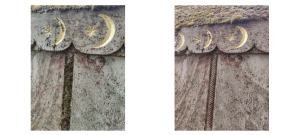
Revealing the detailed carving under the moss
Working so close to a historic building, using small wooden tools, and getting the feel of the moss and the stone was a surprisingly mindful experience. I felt that I was making a positive impact on the building and my mind was focused on the task in front of me. It was also a few hours in the day that I spent not looking at a screen (apart from taking these photos!).
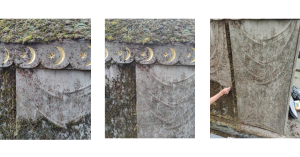
One of our existing history research volunteers, Marina, came along to try her hand at practical building conservation. She said: “After spending months reading and learning about the Burtons, it was surreal to come up close and personal with the mausoleum. I admit, I used to be swept up in the romantic vision of a quiet, moss-covered stone monument hiding in our quiet corner of Mortlake. But seeing it getting cleaned made it clear that so many new visions would become possible.”
Habitats & Heritage’s Heritage Projects Manager, Stephen Fielding, said: “My job finds me in graveyards on a regular basis, and I see all too often how the natural world is constantly trying to reclaim historic tombs and monuments. The Burtons’ Mausoleum is no exception and has been covered in a layer of moss since I joined Habitats & Heritage in 2021. This training session led by Cliveden Conservation, has provided me with knowledge and confidence to deal with moss coverage on stone. This will help me in my role in advising others as to the best practices for maintaining our most treasured stone structures. If I’d known how cathartic scraping off moss with a small wooden tool could be, I would have started doing it a long time ago! A most enjoyable session and I thank Caitlin and Helen from the Burtons: Exploring without Boundaries team for an excellent and informative day.”
The group made amazing progress and by the end of the day we had cleared the sides of the tent and some of the roof (up to where we could reach with a small step). The contrast on the north side was particularly stark and the line on the roof shows just how thick the coverage was.
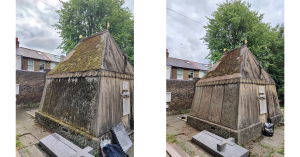
Before and after: North side of the Burton Mausoleum
The remainder of the moss will be removed by our conservators when scaffolding is put up. Once all the moss is cleared, our conservation specialists will gently steam clean the surfaces, make repairs to the stonework and pointing, and apply a protective lime wash. This is due to take place at the end of August and into September 2025.